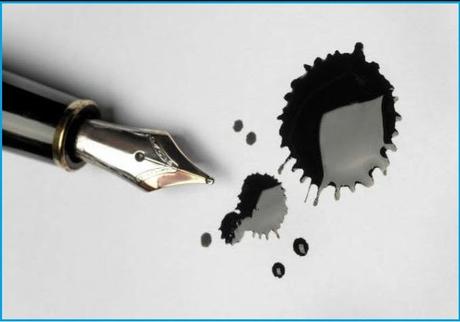Which means I’m going to use as a start date for the history of the pen for writing as 2500 BCE in Egypt when scribes began to use a special type of rush that was growing on the coastline. These sea rushes were used to make thin reed pens which were used on papyrus scrolls.
A small advancement was made in 1300 B.C. when the Romans developed a metal stylus which was used for writing on wax tables. The metal stylus was defined as: “An iron instrument resembling a pencil in size and shape. At one end it was sharpened to a point for scratching the characters upon the wax (Quintil. i.1 §27). In Asia at about the same time scribes used bronze stylus. Several years later, the Egyptians advanced further by employing thick Calamus/Bamboo reeds from Armenia and Egypt. The Chinese implemented brushes into pens made from Camel/Rat hair. The reed pen survived until papyrus was replaced by animal skin.The quill pen was created in the 5-6th century in Seville, Spain. They were widely used, and the best ones were made from swan feathers, while poorer writers used goose feathers. These were durable, but had to be sharpened often. To do this, the writer needed a specific knife, which is where the term "pen-knife" originated. This type of pen actually also changed the way that people wrote as they developed faster and more decorative styles with smaller letters.The time of the quill ended in 1822 when John Mitchell from Birmingham developed machine-made steel-point pens on a mass scale. These were still ink pens and functioned in the same way as quill, needing to be dipped into ink, but were sturdier and much less expensive. Their popularity took off and historians believe that by the 1850s half of all dip pens were made in Birmingham.In 1884 Lewis Edson Waterman developed and gained a patent for the three-channel ink feed fountain pen. The design ensured a smooth flow of ink during writing, and revolutionised the pen into a portable tool.
Lazlo Biro, a Hungarian journalist living in Argentina during World War II was all too familiar with the annoyance of ink smudging on paper. He came up with the idea to use quick-drying ink instead of the usual India ink and to introduce a small metal ball that rotated. The ball would work to keep the writing pen from drying out and would distribute the ink smoothly. In 1943, Lazlo and his brother Georg, a chemist, were granted a new patent. The British government bought the rights for the pens so they could be used by Royal Air Force crews as these pens were sturdier and could write at high altitudes unlike the fountain pen that would flood under such conditions.Other developments followed such as the rollerball invented in the 1980s by the Japanese company Ohto. The rollerball pen is the same design as the ballpoint pen, but instead utilises water or gel-based liquid ink that provides a writing style very similar to the fountain pen. Then there are felt-tipped pens which are used in many creative environments due to their ability to write on many different surfaces.All of which begs the question of what did people use as ink. And the answer to that is too long for this article. Maybe another day.As for the poem. Well, receiving a hand written letter is not just about the words. The texture, the way it’s crumpled, the history, the hand writing itself. You don’t get that from an email.

Touching the Past
Do not come in August
but I did
Helsinki Airport midnight
she wasn’t there
what then
buses hostels
lakes trees
bars saunas
Berliners in a cabin
found by chance
whisky and dictionaries
here’s the letter from Kristina
20th September 1978
we had a great time in Finland
completely forgotten until now
and I’m touched by her words
and the card from Millie
do not come in August
two scraps from a box
found in a cupboard
after an email from Julie
about rummaging her attic
I write a reply
in Times New Roman
save to her file
without creases
or smears of jam
down the left hand side
of the second page.
Terry Quinn. Email ThisBlogThis!Share to TwitterShare to Facebook
